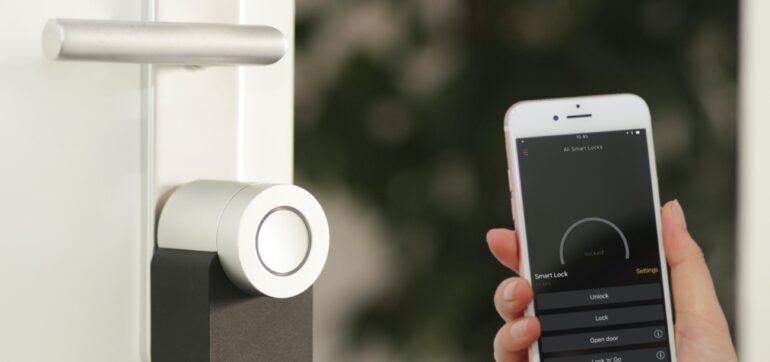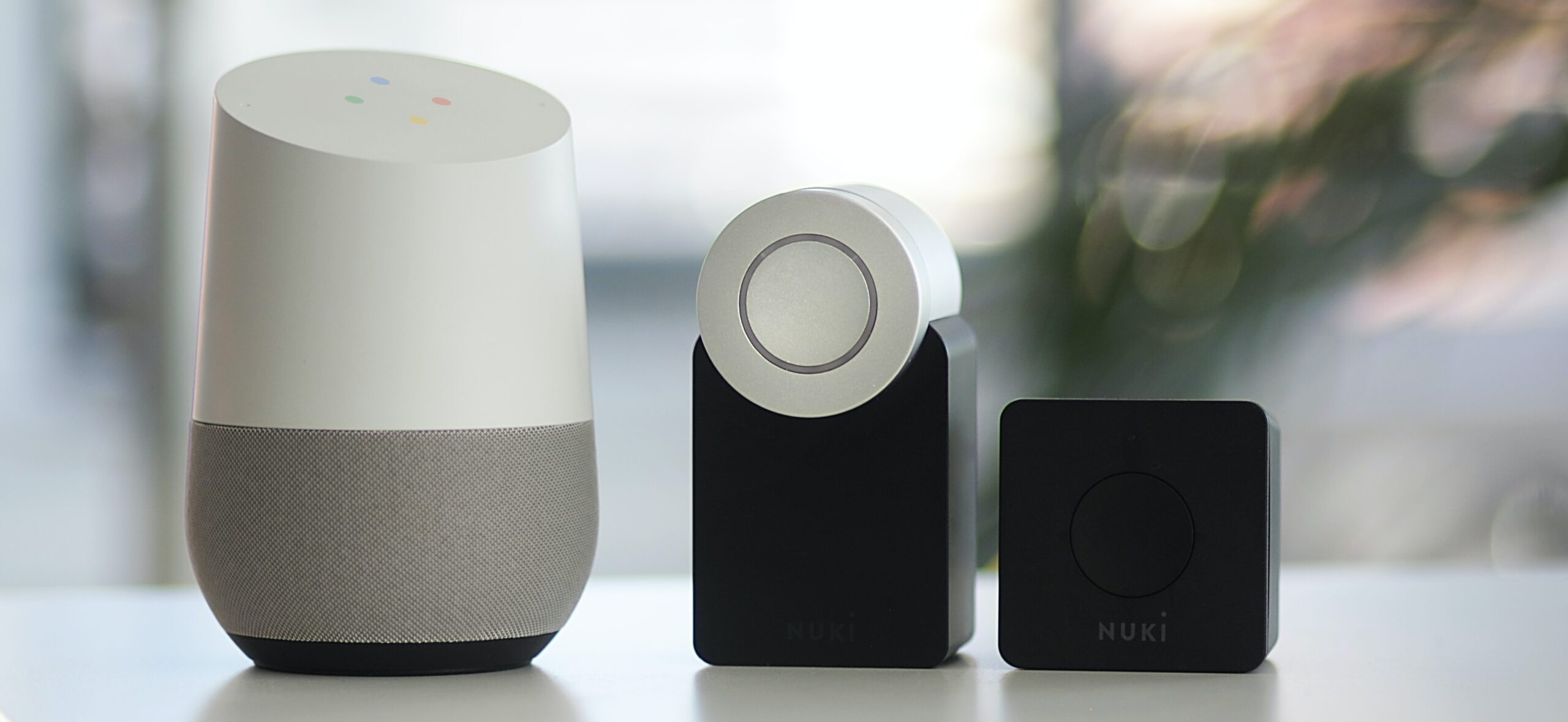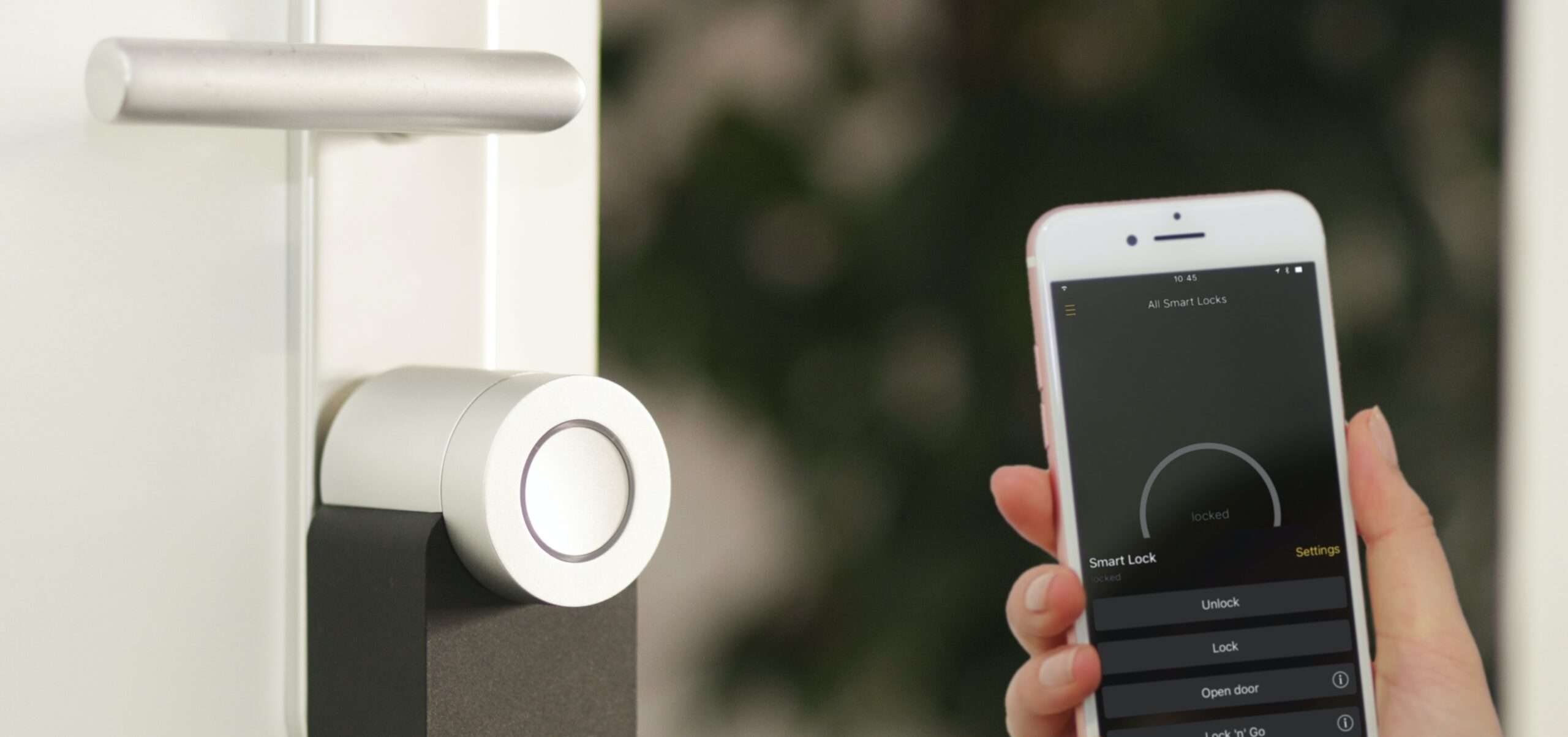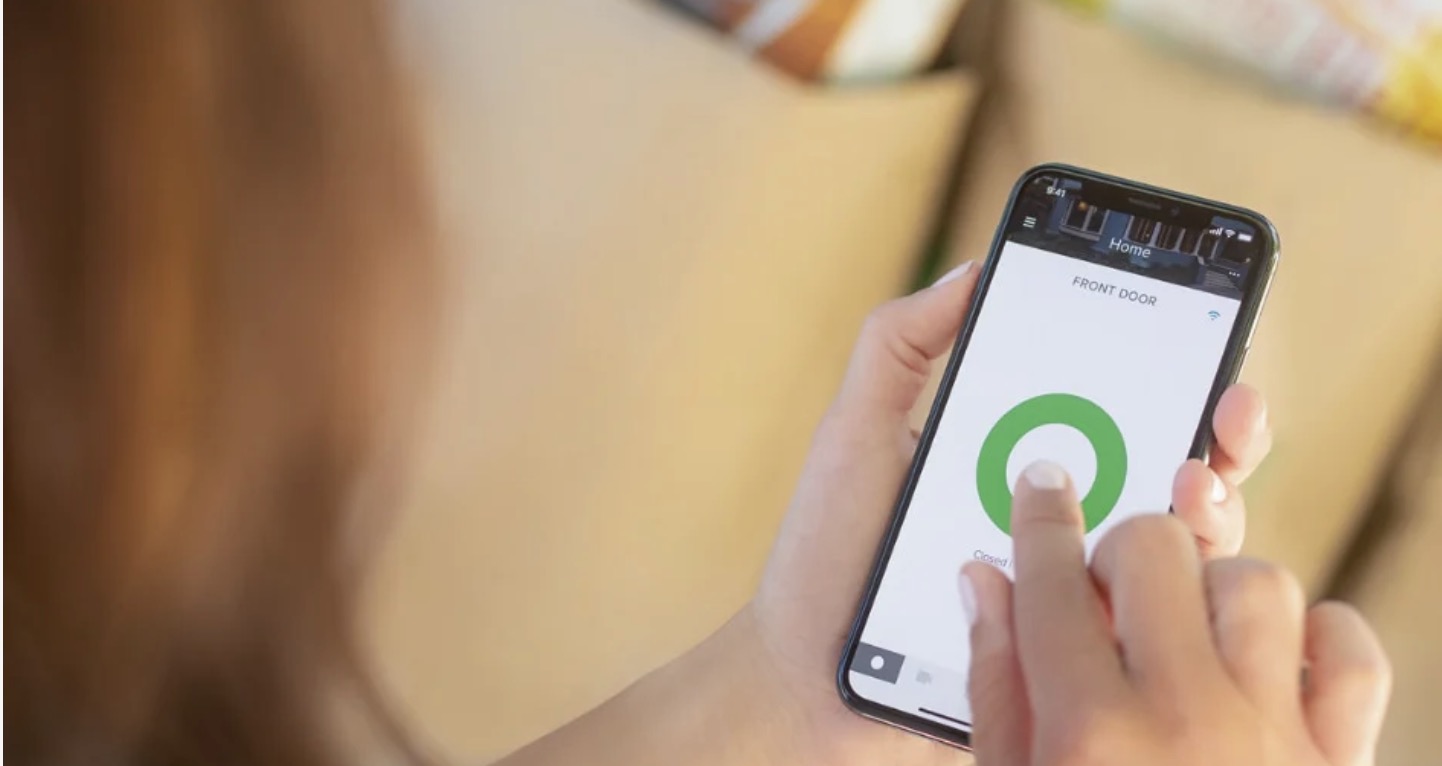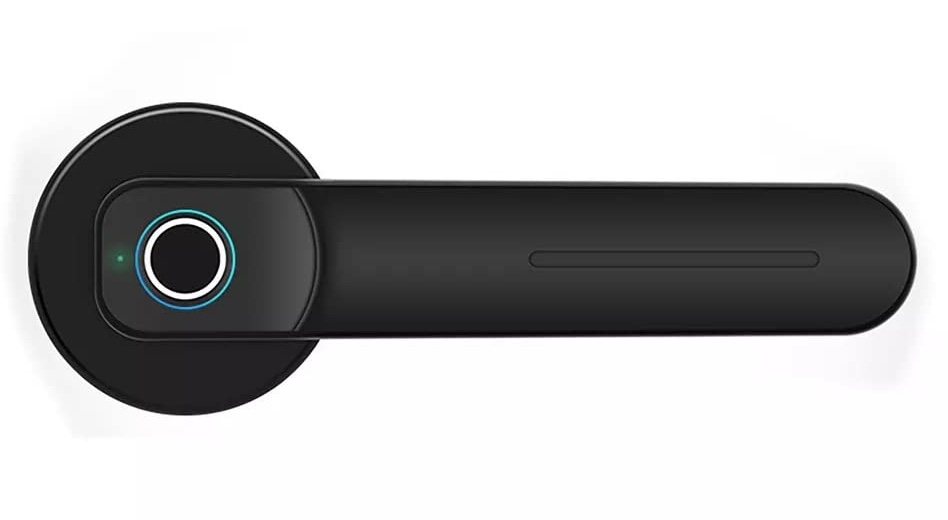Smart locks have become a popular choice for homeowners and renters alike. They offer convenience, security, and peace of mind. However, with a multitude of options available in the market, it can be overwhelming to choose the right one. In this guide, we’ll break down the process step by step and highlight the key factors to consider when buying a smart lock.
Whether you’re a tech-savvy enthusiast or a homeowner looking for a simple upgrade, this comprehensive guide will help you navigate the world of smart locks and empower you to make an informed decision that aligns perfectly with your home and lifestyle.
Step 1. Determine the type of Lock
Before you start shopping for a smart lock, it’s crucial to identify the type of lock you currently have on your door. The type of lock you have will influence your choice of a compatible smart lock. There are three common lock types to consider:
- Deadbolt Lock: This is the most common type of lock found on the majority of front doors. A deadbolt extends a solid metal bolt into the door jamb, providing a high level of security. Smart locks designed for deadbolts are usually the easiest to find and install, making them a popular choice for most homeowners.
- Lever Handle Lock: Lever handle locks are often used on interior doors, such as bedroom or bathroom doors. These locks have a lever that you push down to open the door rather than a traditional key cylinder. Smart locks for lever handle doors exist, but they are less common, so it’s essential to ensure you choose a compatible one if you have this type of lock.
- Mortise Lock: Mortise locks are commonly found in older homes or commercial buildings. They are built into the door and are more complex than deadbolts or lever handle locks. If you have a mortise lock, it’s essential to consult with a professional locksmith or an expert to find a suitable smart lock option, as they can be more challenging to replace.
Understanding your current lock type is the first step in selecting the right smart lock for your door. It will ensure that the smart lock you choose not only fits your door but also provides the level of security you desire.
Step 2: Check Compatibility
Once you’ve determined the type of lock on your door, the next crucial step is to ensure compatibility between your existing lock and the smart lock you intend to purchase. Not all smart locks are universally compatible with all types of doors or existing deadbolts. Here are the key aspects to consider in terms of compatibility:
1. Door Thickness: Check the thickness of your door. Standard interior and exterior doors are typically 1 3/4 inches thick, but some older homes may have thicker or thinner doors. Make sure the smart lock you choose is compatible with your door’s thickness.
2. Door Material: Different doors are made from various materials, including wood, metal, or composite materials. Ensure that the smart lock you select is suitable for the material of your door. Some smart locks may not work well with metal doors due to interference with the wireless signal.
3. Deadbolt Type: If you have a deadbolt lock, it’s essential to verify if your smart lock of choice is designed to replace or work with a deadbolt lock. While most smart locks are compatible with standard deadbolts, custom or high-security deadbolts may require specialized smart lock options.
4. Door Design: Take into account the design and aesthetics of your door. Some smart locks have different styles and finishes, so choose one that complements your door’s appearance and your home’s overall look.
5. Home Automation System: If you have an existing home automation system, ensure that the smart lock is compatible with your system. Common protocols for integration include Zigbee and Z-Wave, which allow your smart lock to communicate with other smart devices in your home.
6. Wi-Fi and Bluetooth Compatibility: For remote access and control, smart locks typically use either Wi-Fi or Bluetooth connectivity. If you want remote locking and unlocking capabilities, choose a smart lock that aligns with your preferences and offers the necessary connectivity.
7. Keyless Entry: Consider whether you want keyless entry and check if the smart lock supports it. Some smart locks offer keyless options, while others rely on traditional keys or a combination of both.
Checking compatibility is essential to ensure that your new smart lock seamlessly integrates with your existing setup and provides the desired level of convenience and security. Failing to do so might lead to compatibility issues and difficulties during installation.
Step 3: Choose the Right Connectivity
Choosing the right connectivity for your smart lock is a critical decision as it determines how you will interact with and control your lock. The connectivity method you select can impact the range, remote access capabilities, and integration with your smart home ecosystem. Here are the key factors to consider when deciding on the right connectivity:
1. Bluetooth Connectivity:
- Short-Range Control: Bluetooth-enabled smart locks offer short-range control, typically within 30 to 300 feet. This is ideal for locking and unlocking the door when you are in close proximity to it, such as arriving home or leaving.
- Battery Efficiency: Bluetooth uses minimal power, making it an energy-efficient option for smart locks. This means your lock’s batteries will last longer between replacements.
- Limited Remote Access: While you can control your lock via Bluetooth when you’re nearby, remote access is limited unless your smart lock is also paired with a compatible Wi-Fi bridge or hub.
2. Wi-Fi Connectivity:
- Remote Access Anywhere: Wi-Fi-enabled smart locks provide remote access and control from anywhere with an internet connection. You can check your lock’s status, grant access, or lock and unlock your door while you’re away from home.
- Integration with Smart Home Ecosystems: Wi-Fi connectivity allows for easy integration with popular smart home ecosystems such as Amazon Alexa, Google Assistant, and Apple HomeKit, enabling voice control and automation.
- Power Consumption: Wi-Fi locks tend to use more power than Bluetooth locks, so you may need to replace batteries more frequently.
3. Zigbee or Z-Wave Connectivity:
- Smart Home Integration: Zigbee and Z-Wave are wireless communication protocols commonly used for smart home devices. If you have a comprehensive smart home setup, a smart lock with Zigbee or Z-Wave connectivity can seamlessly integrate with your existing ecosystem.
- Reliable and Low Interference: These protocols offer reliable, low-interference communication, making them suitable for larger smart home networks.
- Requires a Hub or Bridge: To use Zigbee or Z-Wave smart locks, you’ll need a compatible hub or bridge that acts as a central controller for your smart home devices.
When choosing the right connectivity, consider your specific needs and preferences. If you value convenience and remote access, a Wi-Fi-enabled smart lock may be the best choice. If you prefer energy efficiency and don’t need remote control often, a Bluetooth lock could suffice. For comprehensive smart home integration, Zigbee or Z-Wave connectivity may be the way to go.
Step 4: Security Features
Selecting a smart lock for your home is primarily about enhancing security, so it’s crucial to thoroughly assess the security features offered by the options available. Here are the key security considerations when choosing a smart lock:
1. Encryption:
Look for a smart lock that uses strong encryption to protect your data and communication. Most reputable smart lock manufacturers employ advanced encryption protocols to ensure the security of your smart lock’s communication.
2. Tamper Alerts:
A reliable smart lock should provide tamper alerts. These alerts notify you if someone tries to tamper with the lock or force the door open. Timely notifications can help you take immediate action in case of a security breach.
3. Secure Code Entry:
Smart locks often allow users to set up and manage access codes for guests and family members. Ensure that the lock offers secure code entry methods, such as one-time codes or temporary access codes. This minimizes the risk of unauthorized access through stolen or guessed codes.
4. Two-Factor Authentication (2FA):
Some advanced smart locks offer two-factor authentication, adding an extra layer of security. With 2FA, you may be required to confirm your identity through an additional method, such as a fingerprint scan or a one-time code sent to your phone, before granting access.
5. Key Bypass Protection:
Consider whether the smart lock has key bypass protection. This feature prevents traditional lock-picking methods or the use of physical keys to manipulate the lock. It’s an additional layer of security that ensures unauthorized access is challenging.
6. Lockout Controls:
Smart locks should have lockout controls to prevent brute force attacks. After a certain number of failed attempts to enter a code or access the lock, the smart lock can temporarily lockout further attempts to protect against unauthorized entry.
7. Remote Monitoring:
If you opt for a Wi-Fi-enabled smart lock, it may offer remote monitoring. This feature allows you to check the lock’s status and access history through the associated mobile app, giving you real-time insights into who’s coming and going.
8. Physical Durability:
Don’t overlook the physical durability of the smart lock. It should be able to withstand weather conditions if installed on an exterior door. Look for models with weather-resistant or even weatherproof designs.
9. Certification:
Check if the smart lock has been certified by relevant security organizations. Some locks meet industry standards for security and encryption, providing an extra level of confidence in their reliability.
10. Regular Firmware Updates:
Choose a smart lock from a reputable manufacturer that regularly releases firmware updates. These updates can patch security vulnerabilities and enhance the overall security of the lock.
When selecting a smart lock, prioritize security features that align with your specific needs and concerns. Whether you’re looking for robust encryption, tamper alerts, or key bypass protection, these security features play a vital role in ensuring the safety and security of your home.
Step 5: Mobile App and User Management
The mobile app and user management aspects of a smart lock are essential for ensuring seamless control, convenience, and the ability to manage access to your home. Here’s a detailed breakdown of these critical features:
1. Mobile App Functionality:
- Evaluate the mobile app that accompanies your smart lock. It should be user-friendly, intuitive, and offer a wide range of functionalities. Key features to look for in the app include:
- Remote Lock and Unlock: The ability to lock or unlock your door remotely via the app is a fundamental feature. This is especially handy when you need to grant access to someone while you’re away.
- Access Code Creation: The app should allow you to create and manage access codes for family members, guests, and service providers. You should be able to set expiration dates for temporary codes.
- Access History: A log of who has locked and unlocked the door, along with timestamps, is crucial for monitoring home activity. Look for an app that provides access history.
- Notifications: The app should send you real-time notifications about door activity. For example, you should receive alerts when someone locks or unlocks the door.
- Integration with Other Smart Devices: If you have other smart home devices, such as security cameras or smart lights, check if the app can integrate and control these devices to create automation routines.
2. User Management:
Efficient user management is vital, especially if multiple people need access to your home. Consider the following:
-
- Multiple User Access: The smart lock should allow you to add multiple users and assign them unique access codes or permissions. This ensures that family members and guests can have their own codes for entry.
- Temporary Access: If you frequently have guests or service providers, the smart lock should enable you to create temporary access codes with specific time limits. This ensures that once their task is complete, their access is automatically revoked.
- Revocation of Access: It should be easy to revoke access for any user, whether it’s a permanent resident or a temporary guest, in case you need to restrict entry.
3. User Profiles:
Some smart locks offer user profiles within the app. This allows each user to have their own profile, complete with their access history and personalized settings. User profiles can help you keep track of who’s coming and going more effectively.
4. Privacy and Data Security:
Ensure that the mobile app follows strict privacy and data security practices. It should protect your personal information and access data, ensuring that your home’s security is not compromised.
5. Ease of Use:
A user-friendly mobile app is essential. It should be straightforward to navigate and set up. Ideally, it should offer tutorials or guides to assist you during the initial setup process.
6. Remote Management:
If you need to manage your smart lock when you’re away from home, make sure the app offers remote control and management capabilities. This can be particularly useful when granting access to guests or service providers while you’re not on-site.
The mobile app and user management features play a significant role in the day-to-day operation of your smart lock. They enable you to control and monitor access to your home efficiently. Consider your specific requirements, such as the number of users and the need for temporary access, when choosing a smart lock with the right mobile app and user management capabilities.
Step 6: Battery Life
Smart locks are powered by batteries, and the battery life is a crucial factor to consider when selecting the right lock for your home. Prolonged battery life ensures that your smart lock operates smoothly and doesn’t leave you locked out unexpectedly. Here’s an in-depth look at the aspects related to battery life:
1. Battery Type:
Smart locks commonly use AA or AAA batteries. Some locks use rechargeable batteries, while others rely on standard disposable ones. Consider which type you prefer based on your convenience and sustainability preferences.
2. Battery Life Expectancy:
Different smart locks have varying battery life expectancies, typically ranging from a few months to over a year. Look for models that offer longer battery life to reduce the frequency of battery replacements.
3. Low-Battery Alerts:
Many smart locks come with low-battery alerts. These alerts notify you when the battery is running low, ensuring that you have ample time to replace it before it completely depletes.
4. Emergency Power Options:
Explore whether the smart lock offers emergency power options in case the battery completely dies. Some locks may have external power terminals, allowing you to use an external power source to unlock the door temporarily.
5. Battery Drain Factors:
Understand the factors that can affect battery life, such as extreme temperatures. If you live in an area with harsh weather conditions, it’s important to choose a smart lock designed to withstand these conditions and still provide extended battery life.
6. Power Consumption:
Consider the type of connectivity used by the smart lock. Wi-Fi-enabled locks tend to use more power compared to Bluetooth-only locks. If battery life is a top priority for you, opt for a lock with energy-efficient connectivity.
7. Easy Battery Replacement:
Smart locks with a user-friendly battery replacement process can save you time and hassle when it’s time to change the batteries. Look for locks that provide easy access to the battery compartment and clear instructions for replacement.
8. Backup Key Access:
Some smart locks come with a physical key as a backup access method. This is particularly handy in case the batteries run out unexpectedly. Ensure you have a backup key and know where it is kept.
To maximize the battery life of your smart lock, consider using high-quality, long-lasting batteries, and avoid using cheap or low-quality options. Additionally, some smart locks offer energy-saving modes that can extend battery life by reducing power consumption.
Step 7: Installation
The installation process of your smart lock is a crucial step that ensures the lock functions correctly and securely. Depending on your level of expertise and comfort with DIY projects, you may choose to install the lock yourself or opt for professional installation. Here’s a detailed breakdown of the installation aspect of your smart lock:
1. DIY Installation:
If you are comfortable with DIY projects and have basic tools, many smart locks are designed for easy self-installation. This can save you money and provide a sense of accomplishment. However, it’s essential to carefully follow the manufacturer’s installation instructions to ensure it’s done correctly.
2. Professional Installation:
If you are unsure about your DIY skills or have concerns about getting the installation right, consider hiring a professional locksmith or a handyman to install the smart lock. Professional installation ensures that the lock is correctly aligned, secure, and functions as intended.
3. Compatibility with Existing Door:
Ensure that the smart lock is compatible with your existing door and deadbolt. Some locks may require minor adjustments or additional components for proper installation. Check the manufacturer’s guidelines for any specific door requirements.
4. Tools and Equipment:
Whether you’re doing a DIY installation or overseeing professional installation, ensure you have the necessary tools and equipment readily available. This typically includes screwdrivers, a tape measure, and a drill, among other common tools.
5. Calibration and Setup:
After physical installation, you’ll need to calibrate and set up the smart lock. This process involves configuring user codes, connecting the lock to your mobile app or smart home system, and testing its functionality.
6. Testing and Quality Assurance:
After installation and setup, thoroughly test the smart lock to make sure it locks and unlocks smoothly, registers access codes accurately, and sends notifications if applicable. Address any issues or inconsistencies promptly.
7. Firmware Updates:
Check if the smart lock requires any firmware updates during or after installation. Keeping the lock’s software up to date is crucial for security and functionality.
8. Follow Local Regulations:
Be aware of any local or regional regulations or building codes related to smart lock installations. Some areas may have specific requirements or restrictions for electronic locks.
9. Installation Support:
If you choose to install the smart lock yourself, make sure the manufacturer offers reliable customer support or installation guides. If you encounter any issues during the installation process, having access to knowledgeable support can be invaluable.
10. Consider Aesthetics:
Take into account the aesthetics of your door when installing the smart lock. Ensure it aligns with the overall appearance and design of your home’s entryway.
The installation of your smart lock is a critical step to ensure the proper functioning and security of your home. Whether you decide to install it yourself or seek professional assistance, following the manufacturer’s guidelines and recommendations is essential.
Step 8: Price and Warranty
Determining the budget for your smart lock purchase and understanding the warranty terms are pivotal factors that influence your decision. It’s important to balance your financial considerations with the assurance of quality and support. Here’s a more detailed look at these two aspects:
1. Budget Considerations:
Before delving into the world of smart locks, set a budget that aligns with your financial constraints. The price of smart locks can vary significantly, so establishing a budget range helps narrow down your options.
2. Initial Cost vs. Long-Term Value:
Consider not only the initial cost of the smart lock but also its long-term value. While some smart locks may have a higher upfront cost, they may offer more features, durability, and security benefits, making them a better investment in the long run.
3. Additional Expenses:
Be aware of any additional expenses that may be associated with your smart lock purchase. This could include the cost of a smart home hub or Wi-Fi bridge if your lock requires one for remote connectivity. These add-ons should be factored into your budget.
4. Warranty Terms:
Investigate the warranty terms offered by the smart lock manufacturer. A robust warranty can provide peace of mind, assuring you of support in case of any issues or defects. Typically, warranties for smart locks range from one to three years.
5. Warranty Coverage:
Carefully review what the warranty covers. A good warranty should cover manufacturing defects, malfunctioning parts, and other potential issues that might arise with your smart lock. Some warranties also offer coverage for theft or break-ins related to lock failure.
6. Manufacturer Reputation:
Research the reputation of the smart lock manufacturer. Well-established and reputable companies often provide better customer support and stand by their warranty terms. Customer reviews and ratings can be helpful in evaluating a manufacturer’s track record.
7. Return Policies:
Understand the return policies of the retailer or manufacturer. In case the smart lock doesn’t meet your expectations or requirements, a favorable return policy can make the process smoother.
8. Value for Money:
Assess the smart lock’s features, security, and convenience against its price. Consider whether the lock’s price aligns with the value it provides. A more expensive lock may be justified if it offers enhanced security and integration with your existing smart home ecosystem.
9. Compare Options:
Don’t rush into a purchase. Compare multiple smart lock options within your budget, taking into account their features, security, and warranty. This comparative analysis will help you make an informed decision.
10. Long-Term Cost of Ownership:
Think about the long-term cost of owning and maintaining the smart lock. This includes battery replacements, potential subscription fees for cloud services, and any future upgrades or add-ons.
Balancing your budget with the features and warranty coverage of the smart lock is essential to make a cost-effective and informed choice. By setting clear financial parameters, understanding the warranty terms, and thoroughly assessing the value provided by the lock, you can ensure that your investment in a smart lock aligns with your expectations and provides the security and convenience you seek for your home.
Step 9: Additional Features
When selecting a smart lock for your home, it’s essential to consider the additional features and capabilities that can enhance convenience, security, and integration with your smart home ecosystem. Here’s an in-depth exploration of these supplementary features:
1. Keyless Entry Options:
Some smart locks offer various keyless entry options beyond traditional physical keys. These options may include touchpad entry, biometric fingerprint scanning, or even voice recognition. Evaluate these methods for their convenience and security.
2. Voice Control Integration:
If you have a smart home ecosystem or virtual assistant devices like Amazon Alexa or Google Assistant, check if the smart lock is compatible with these platforms. Voice control allows you to lock or unlock your door using voice commands, adding an extra layer of convenience.
3. Auto-Locking and Unlocking:
Smart locks with auto-lock and auto-unlock features can enhance security and convenience. They automatically lock your door when you leave and unlock it as you approach, reducing the risk of accidentally leaving your door unlocked.
4. Geofencing:
Some smart locks use geofencing technology to detect your smartphone’s location. When you approach your home, the lock can automatically unlock, and it will lock itself when you move away from your home, providing a seamless and hands-free experience.
5. Access Scheduling:
Access scheduling allows you to set specific time windows when access codes are valid. This is useful for granting access to service providers or guests only during designated hours.
6. Guest Access Management:
For frequent guests or short-term visitors, some smart locks offer guest access management. This allows you to send temporary access codes via the mobile app, ensuring that visitors have access only for a limited duration.
7. Remote Monitoring:
If you want to keep an eye on who enters and exits your home, consider a smart lock that offers remote monitoring. This feature allows you to check the lock’s status and access history via your mobile app from anywhere.
8. Compatibility with Smart Home Devices:
If you have other smart home devices, such as security cameras, lights, or thermostats, look for a smart lock that seamlessly integrates with these devices. This allows you to create automation routines and enhance your overall home automation experience.
9. Secure Integration:
Ensure that the smart lock integrates securely with your home automation system. Security should not be compromised when connecting your lock to other devices.
10. Data Privacy:
Evaluate the data privacy practices of the smart lock manufacturer and its associated mobile app. Your security and access data should be handled with utmost care, and the company should have clear policies on data privacy.
11. Design and Aesthetics:
Consider the design and aesthetics of the smart lock. It should complement your door’s appearance and overall home design, ensuring a seamless and visually pleasing integration.
12. Emergency Access:
Some smart locks provide a means for emergency access in case of device malfunction or power outage. This could involve using a physical key or an external power source.
13. Mobile App Features:
Beyond basic mobile app functionalities, some smart locks offer advanced features like geolocation-based controls, user profiles, and the ability to share access permissions with trusted individuals.
14. Sound and Light Notifications:
For accessibility, some smart locks offer sound or light notifications to confirm actions like locking and unlocking the door, making them useful for individuals with visual or auditory impairments.
Considering these additional features can greatly enhance the functionality and usability of your smart lock. It’s essential to evaluate which features align with your specific needs, providing the level of convenience and security you desire for your home
Selecting the right smart lock for your home is a decision that combines security, convenience, and modern technology. This comprehensive guide has walked you through a step-by-step process and highlighted key factors to consider when purchasing a smart lock. By taking each of these steps seriously, you can make an informed choice that enhances the safety and ease of access to your home.
Remember that your decision should align with your specific needs and preferences, as well as the unique characteristics of your home. Smart locks come in various types and offer a wide range of features, so tailoring your choice to your lifestyle is essential.
Furthermore, researching and reading user reviews can provide valuable insights into the real-world performance of a smart lock. Seek out locks from reputable manufacturers with a track record of quality and customer support to ensure that your investment is reliable and secure.
Your home’s security and convenience are paramount, and the right smart lock can provide both. By following the steps outlined in this guide, you’ll be well-prepared to choose a smart lock that not only fits your door but also your lifestyle, bringing you the peace of mind and accessibility you desire.
Stay informed, stay secure, and enjoy the benefits of modern technology with your new smart lock.
